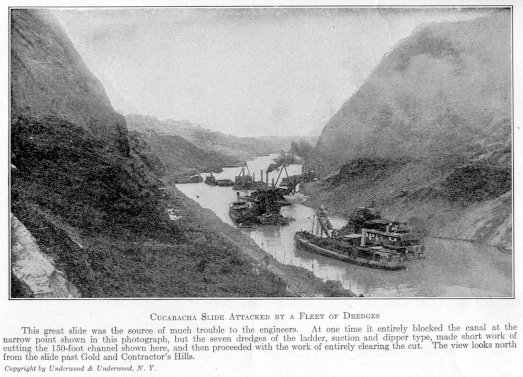Digging Through Panama
Today, we learn to bend to the shape of the land. The University of Houston's College of Engineering presents this series about the machines that make our civilization run, and the people whose ingenuity created them.
The Panama Canal is a stranger thing than most of us realize. To begin with, Panama twists so the Atlantic side is northwest of the Pacific side. And cutting through that strip of land cost a third of a century of frustration and death.
The idea of a canal across Panama had been around for centuries in 1879. Then the French engineer de Lesseps convened an international congress to consider building one. De Lesseps had been the driver behind the Suez Canal. It'd been a brilliant success, but it was a sea-level cut through sand that didn't rise fifty feet above sea level. The rainfall was only an inch a year.
Panama was another cup of tea: fifty miles of swamp, rock, clay, forest, fault lines, and rivers. The Culebra ridge rose 350 feet above sea level. The annual rainfall was 120 inches. It was infested with mosquitoes.
De Lesseps was as naive as he was charismatic. He proposed to slash another sea-level Suez Canal through all that. The engineer de Lepinay had already built a railway across Panama. He knew Panama and he fought de Lesseps. He wanted to shape the canal to the land. He proposed to dam the Chagres River on the Atlantic side and make a natural channel halfway across Panama. Then he wanted to march up and over Culebra Ridge, using locks.
The Suez success had blinded people, and de Lesseps won out. Digging began in 1880. For nine years de Lessups lied to the press while clay stuck to French shovels and mud slides undid each day's work. The French gave up in 1889.
We gained the rights to build a canal in 1903. Then we argued the old argument -- de Lesseps's sea-level trench or de Lepinay's locks. The majority wanted a sea-level trench. But another engineer, John Stevens, took de Lepinay's plan to Congress. He won. We began the locks in 1906.
It was still a terrible task. We still had to overcome mud slides in the Culebra Cut. We had to move far more dirt than we had ever dreamed. At one point, mosquito-borne yellow fever was killing twenty percent of the workers. Islands rose up in the new waterways as mud slipped along fault lines.
The Canal finally opened in 1914, and it completely changed the shipping trade. But straight-line thinking kept calling for a straight-line canal. Government inquiries recommended a new sea-level canal in 1947, and another one during the 1960's.
Wiser heads prevailed. But the Canal played out the basic tension of technology: do we yield to nature or try to conquer her? Something in us wants to be the master. We have the Canal because we bent to nature, but not all technology does.
I'm John Lienhard, at the University of Houston, where we're interested in the way inventive minds work.
(Theme music)
Kerisel, J., Down to Earth. Boston: A.A. Balkema, 1987, Chapter 9.
See also the Encyclopaedia Britannica article. It's pretty complete.

From the 1923 Wonder Book of Knowledge
One of the difficult excavations during the later American phase of construction

Stereopticon image courtesy of Margaret Culbertson
The finished canal as it appeared early in this century